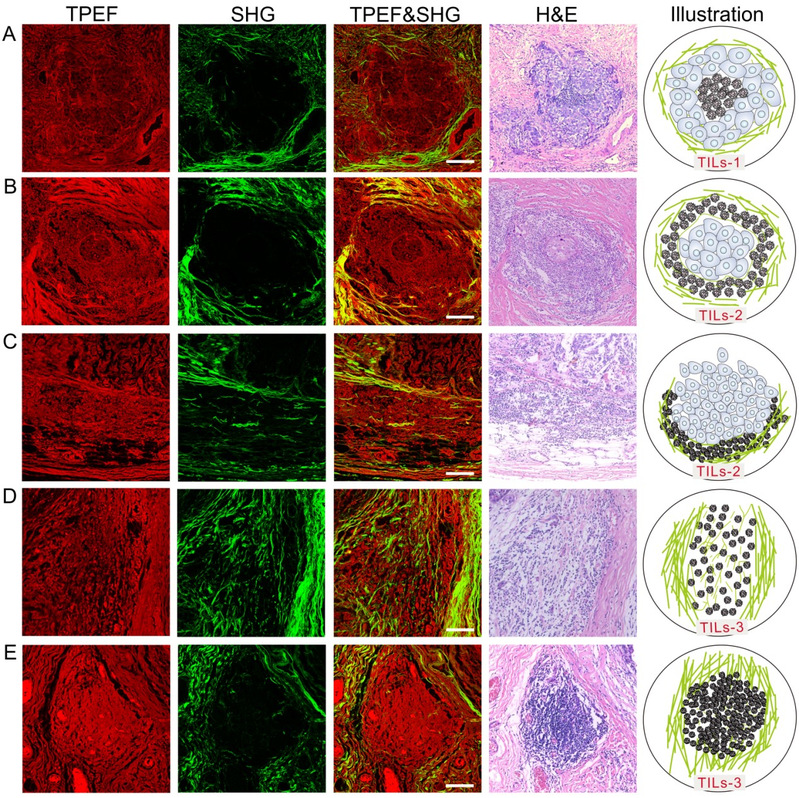
Recently, Prof. Chen Jianxin and Dr. Li Lianhuang’s team from College of Photonic and Electronic Engineering of FNU has made new progress in tumor infiltrating lymphocytes (TILs) in breast cancer. Relevant results were published in the international academic journal European Journal of Cancer (SCI-I, IF=9.162), in the form of a paper, entitled “Prognostic value of tumor-infiltrating lymphocytes based on the evaluation of frequency in patients with estrogen-receptor-positive breast cancer”, with He Jiajia, a doctoral candidate jointly supervised by Prof. Chen and Dr. Li, as the first author of the paper.
In the research, the team first used multi-photon microscope (MPM) for the imaging of TILs in the tumor micro-environment of 564 breast cancer patients. Then based on their relative positions with tumor cells and collagen fibers they redefined TILs as TILs1-3, and on the basis of the expression frequency of TILs1-3, they put forward a new method of assessing the prognostic value of TILs, and gave each patient a TILS-score through ridge regression analysis. The results of medical statistical analysis show that TILs-score is an independent prognostic factor for disease-free survival (DFS) and overall survival (OS) in breast cancer patients, and has greater prognostic value for ER-positive breast cancer patients. Among the ER-positive breast cancer patients, the combination of TILs-score and clinically independent factors will increase the AUC of a training group’s 5-year DFS (OS) to 0.814 (0,830), HR to 4.648 (7.006), and will increase the AUC of a validation group’s 5-year DFS (OS) to 0.804 (0.830), HR to 3.729 (5.132).
According to the International Immuno-Oncology Biomarker Working Group, the proportion evaluation method of TILs applies to the evaluation of ER-negative breast cancer, and is an independent prognostic factor of ER-negative breast cancer. But it remains controversial in the ER-positive breast cancer. The TIls-score model proposed by the group is much more suitable for evaluating ER-positive breast cancer, and is expected to complement the work of international working groups.
(Translated by Liu Tongsheng/ Reviewed by Xie Xiujuan)
